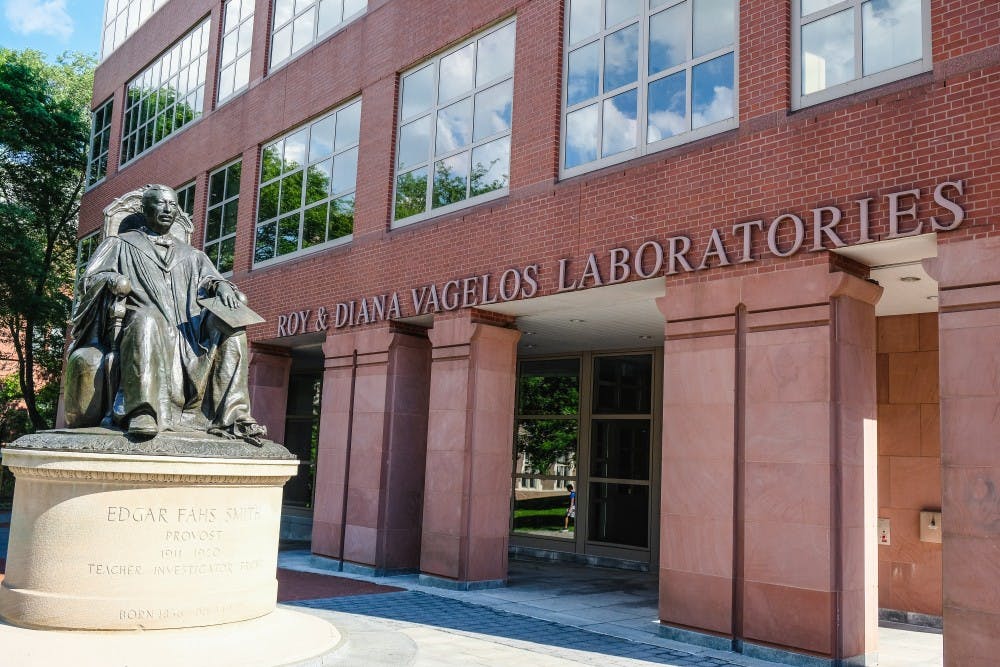Penn's new energy research building, which received a $50 million donation from Roy and Diana Vagelos earlier this month, is set to open in summer 2024. The plan comes in response to the need to further fundraise to cover the total cost of the building.
The building, which is temporarily called the Energy Science and Technology building, will be located at 32nd and Walnut streets, next to David Rittenhouse Laboratory. The finished building will be named after the Vagelos couple, whose donation was the largest in the history of the School of Arts and Sciences. Penn has not determined the total cost of the building, but the school will need additional fundraising as part of the Power of Penn campaign to fully fund the building, SAS Vice Dean for Finance and Administration Matthew Lane said.
When finished, the building will serve as the home of the Vagelos Institute for Energy Science and Technology and the Vagelos Integrated Program in Energy Research. Outside of these two programs, the building will consist only of research labs, which will be shared between SAS and the School of Engineering and Applied Science, Engineering Dean Vijay Kumar said. The building will not have any conventional classrooms, but the lab spaces in the building will be used as teaching spaces for students.
The building is part of plans by the Engineering School to expand by 33%, Kumar added. The project was initially proposed about five years ago as part of Penn Connects 2.0 and was one of President Gutmann's Power of Penn priorities, Lane said.
As the research conducted in the new building will span a variety of disciplines in both schools, the exact departments that will move into the building have not been finalized. Lane said proposed occupancy will be determined by the dean's office along with a committee of faculty.
Facilities and Real Estate Services held a meeting last week with six architectural firms that were invited to design the project.
FRES asked architects to return the design proposals and cost estimates within a month. FRES and a committee of faculty and staff from SAS and Engineering will select the architect, University Architect Mark Kocent said. President Gutmann will take part in making the final architectural decision and FRES is currently in the process of selecting that committee for the Energy Science and Technology Building.
The final firm will be selected based on the best value for the project and FRES expects to have an architect selected in the next two months. SAS Dean Steven Fluharty said the architectural team will be working with faculty and staff leadership to determine the details of the construction plan. He added that this process is currently scheduled to be completed by the end of 2021.
Once the selection committee makes a decision, they will propose it as a recommendation to Fluharty. He added the facility is intended to augment the research space of both schools and is not envisioned as a direct replacement for any portion of DRL. However, it will take up the current site of the High Bay facility, which will be relocated to a nearby area on campus, FRES said.
The collaboration between SAS and Engineering will advance two fields of energy research, storage and catalysis, Kumar said. The focus of energy research at Penn has been on policy, Kumar said, but the new building will focus on science and technology.
Kumar said the research in the building will include studies about how energy solutions can be scaled up to support buildings, city blocks, and eventually cities. Researchers are interested in developing energy conversion methods that are clean and efficient.
An example of the merging of science and engineering that might take place in the new building is using nanotechnology to synthesize new catalysts, Kumar added. The catalysts will then be used for the sustainable conversion of various chemicals into plastics.
On Monday, Penn's Kleinman Center for Energy Policy has received a $30 million anonymous gift that will allow the Center to hire new faculty who specialize in energy policy, as well as supporting its continued programming. The donation towards energy policy research comes three weeks after the Vageloses' donation towards the building for energy science research.









